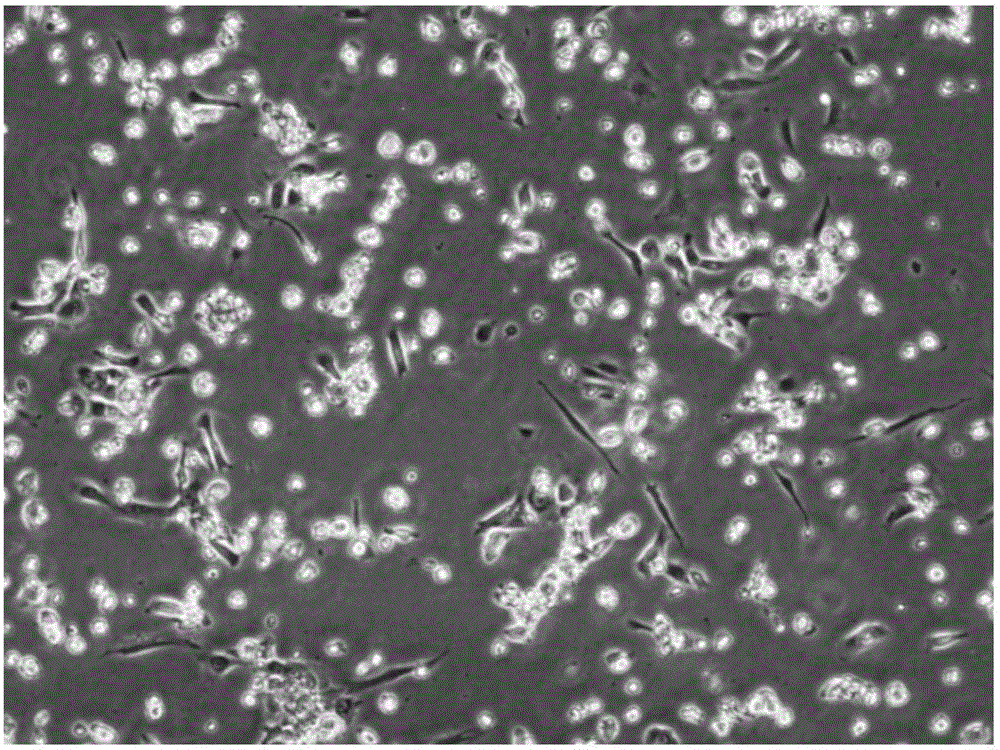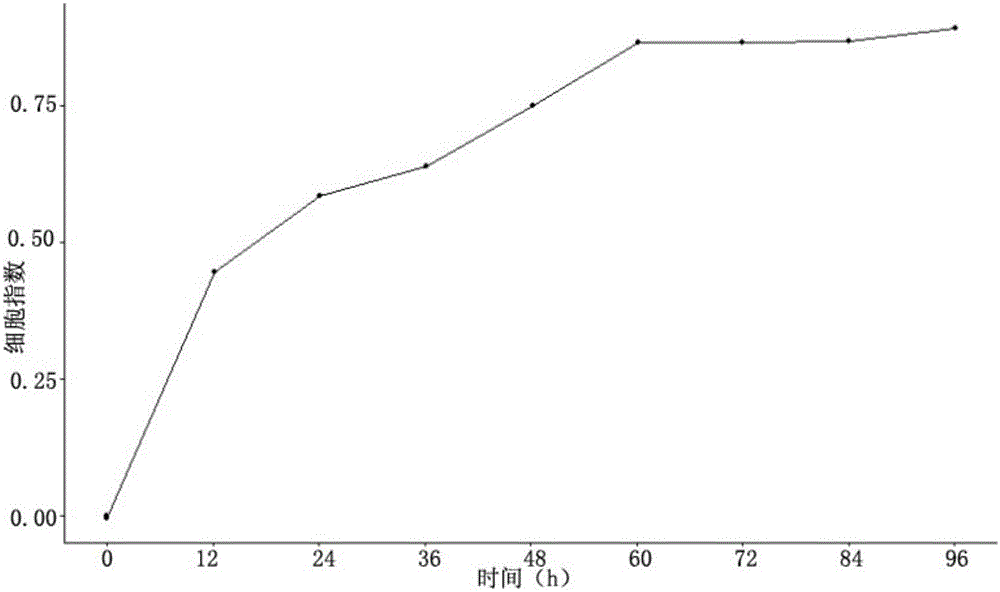Esophageal cancer cell line and application thereof
A technology for cancer cells and esophageal cancer, applied in the fields of biology and oncology, to achieve the effect of strong clone formation ability
- Summary
- Abstract
- Description
- Claims
- Application Information
AI Technical Summary
Problems solved by technology
Method used
Image
Examples
Embodiment 1
[0029] A tumor tissue sample was taken from a patient with esophageal cancer (the patient was a 62-year-old female, the tumor was located in the middle of the esophagus, postoperative pathology showed poorly differentiated squamous cell carcinoma, TNM stage T3N0M0, clinical stage 2A.) after surgical resection. After the separated fresh esophageal cancer tissue was washed with PBS in a sterile ultra-clean bench, it was cut into pieces and separated into 0.5-1mm pieces with ophthalmic forceps, scissors and other instruments in a petri dish. 3 Spread the small piece on the bottom of the dish, and add 10mL of 10% FBS (GIBCO company), 1% double antibody DMEM / F12 cell culture medium (GIBCO company) to the culture dish, put it in 37 ℃, 5% CO 2 cultured in an incubator. Change the medium after 5 to 7 days, discard the necrotic and floating small pieces in the tissue pieces, and carry out subculture. During the subculture process, the fibroblasts were continuously removed by taking ad...
Embodiment 2
[0031] The subcultured human esophageal squamous cell line ZEC-043 cells were used to observe the growth of living cells under an optical microscope (Japan Olympus IMT-2 inverted microscope). Such as figure 1 As shown in the photo of the optical morphology of the cells, it can be seen that the cells are growing vigorously, the background is clear, most of the cells are flat and irregular polygons, and some cells are tightly clustered with each other.
Embodiment 3
[0033] Cell Index refers to the change of electrical impedance generated by the interaction between living cells and the microelectrode in the well of the detection plate. The xCELLigence Cell Function Analyzer converts these signals into specific parameters to become the Cell Index. The cell index is a good measure of the state of the cell - growth, proliferation, shape change, death, stress, etc. The cell index has been reviewed and adopted by many journals.
[0034]Human esophageal squamous carcinoma cell line ZEC-043 cells in good growth state were taken, digested with trypsin, made into cell suspension, and counted. Add culture medium to the E-Plate detection plate of the xCELLigence cell function analyzer and measure the background impedance value, then add 100 μL cell suspension (5000 cells) to the E-Plate detection plate, and place it in an ultra-clean bench at room temperature for 30 minutes. Put the E-Plate detection plate with added cells on the detection table (the...
PUM
 Login to View More
Login to View More Abstract
Description
Claims
Application Information
 Login to View More
Login to View More - R&D
- Intellectual Property
- Life Sciences
- Materials
- Tech Scout
- Unparalleled Data Quality
- Higher Quality Content
- 60% Fewer Hallucinations
Browse by: Latest US Patents, China's latest patents, Technical Efficacy Thesaurus, Application Domain, Technology Topic, Popular Technical Reports.
© 2025 PatSnap. All rights reserved.Legal|Privacy policy|Modern Slavery Act Transparency Statement|Sitemap|About US| Contact US: help@patsnap.com



